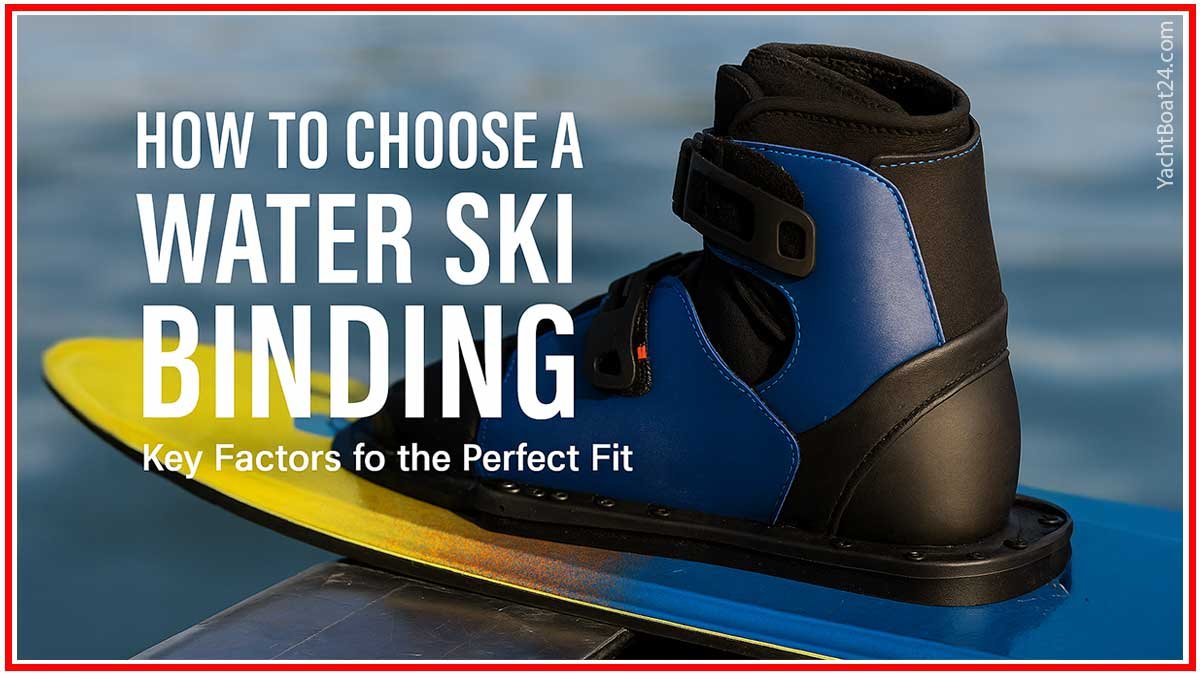Table of Contents
Introduction – Why Binding Choice Shapes Your Water Ski Experience
When you hit the wake, your water ski binding selection is what anchors your feet—and your performance. A poorly chosen binding can reduce control, hamper safety, or lead to discomfort and injury. In 2025, binding innovation has advanced significantly, offering diverse options—from open‑toe models to hard‑shell boots, from adjustable toe platesto hybrid designs—each optimized for different skill levels and riding styles. This guide goes beyond bullet lists, weaving explanations and insights to help you find your perfect match.
The Role of Binding Type in Control and Comfort
Your binding is more than footwear—it’s your connection to the ski. Hard‑shell bindings provide maximum ankle support and fast edge response, making them ideal for advanced or competitive skiers. These offer release mechanisms that can eject you from the ski during a fall, reducing injury risk—especially on slalom courses.
Meanwhile, open‑toe bindings offer flexibility and ease of use. With adjustable straps, they can fit a range of foot sizes and are comfortable for casual or recreational skiers. Many riders prefer them for their forgiving nature, especially in warmer climates.
Hybrid styles and adjustable rear toe plates combine the best of both worlds: snug fit, decent support, and fast entry and exit. These are excellent for evolving skiers or those seeking adaptability.
Understanding your style—high-performance carving, relaxed cruising, or family fun—is the first step in confident water ski binding selection.
Fit and Sizing – The Foundation of Secure Skiing
A binding that doesn’t fit is a performance limiter—and a risk. Unlike shoe sizes, water ski boots and bindings are sized in broad categories like Small, Medium, and Large, and conversion varies across brands.
A binding labeled “Small” may fit a US size 6–8 on one ski and 5–7 on another. Always check the brand-specific size guide before buying. A proper fit means snug support without pressure points. Many modern bindings feature heat-moldable liners, BOA lacing systems, or adjustable straps for customizing the fit.
Correct sizing is essential to maximize control and minimize slippage in aggressive turns and at speed.
Binding Designs and Their Performance Impact
There are several factors to weigh in design choices:
- Open‑toe vs Closed‑toe: Open-toe models offer flexibility, easier access, and sizing adaptability. Closed-toe provides warmth, toe protection, and rigidity.
- Rear Toe Plate (RTP): A plate that fits to your rear foot, leaving toes exposed—often preferred for slip-in convenience and moderate ankle control.
- Adjustable Rear Toe Plate (ARTP): Combines plate support and strap adjustability, suitable for families or shared ski use.
- Hybrid Rear Toe (HRT): Offers partial heel encasement with open toe and flexible fit. A great mid-tier choice.
- Combo or split boots: Seen on beginner skis; easy to share among riders but lacking performance refinement.
Each design suits a particular style: high-speed carving, slalom racing, casual cruising, or youth or shared skiing.
Matching Skill Level to Binding Flex and Support
Beginner and intermediate skiers benefit from softer, more forgiving bindings. They offer ease of entry, greater comfort, and less risk of ankle torque. Recreational bindings typically offer more padding and template flexibility.
Advanced and expert skiers often opt for stiffer models with minimal flex—better for energy transfer and precise edge pressure. Closed-toe or high-rebound boots are common here.
Your water ski binding selection should reflect your ambition, frequency of use, and progression path over the season.
Safety Features and Injury Prevention
One benefit of modern hard-shell bindings is built-in release systems. Much like mountain ski DIN settings, these bindings aim to detach during a crash, reducing the risk to ankles and knees. A well-fitted elite binding will stay firm in action, but release cleanly when needed.
RTPs and adjustable plates also offer safety but rely on snug straps rather than shells. Always ensure bindings meet expected stress levels from your style—recreational or slalom—and remain properly adjusted before each session.
Longevity, Maintenance, and Value in Binding Choices
Investing in a quality binding pays off over time. High-end models with BOA systems or molded liners maintain shape and responsiveness longer. Entry-level bindings offer value but may require more frequent replacement or adjustment.
Bindings exposed to fresh water and aired properly dry longer—lengthening lifespan. Neglecting your binding’s interior after use can lead to breakdowns, odors, and poor performance.
In choosing for your ski setup, consider both the initial cost and how long the binding lasts under consistent use.
Practical Fit Scenarios
Imagine two users:
- User A is a casual skier wanting to share equipment across family members. An adjustable rear toe plate offers flexibility and ease of use—perfect for vacations or mixed-skill groups.
- User B is training for slalom competition. They choose hard-shell boots sized precisely, with minimal give—and they pair them with a RTP complement or double-boot setup for maximum control.
Both scenarios illustrate how your binding choice reflects purpose and priorities in real-world water ski binding selection.
Video – Water Ski Binding
FAQ – Water Ski Binding
This website offers general information for your convenience. YachtBoat24.com makes no warranties, either express or implied, and all use of this site is at your own risk. We are not responsible for third-party content linked to or from this site.

